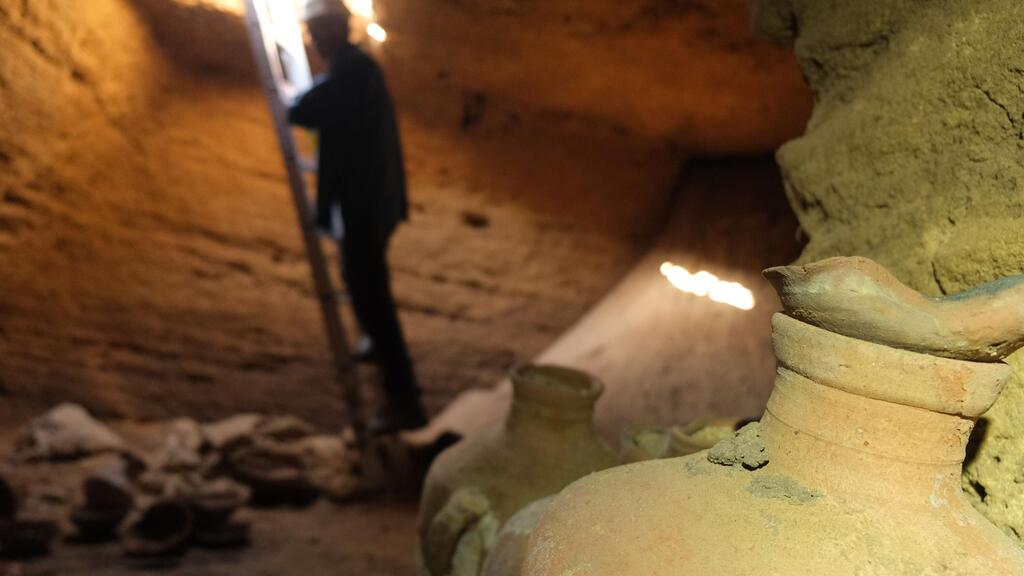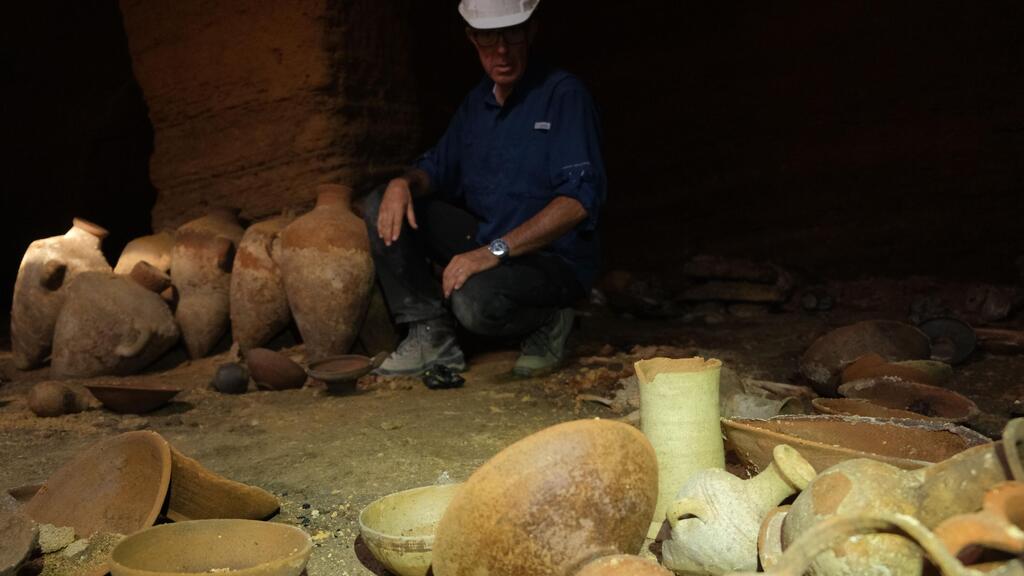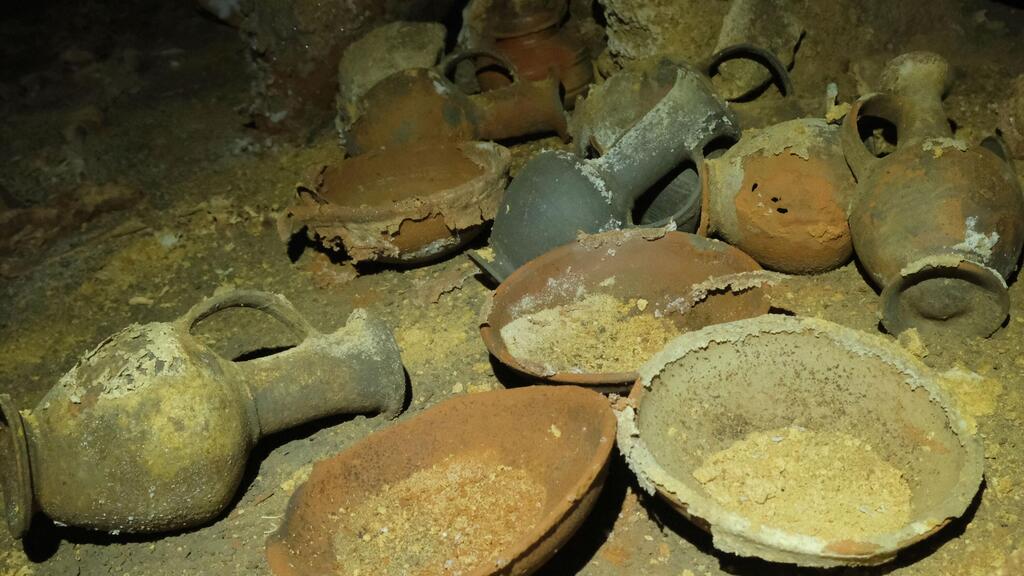Getting your Trinity Audio player ready...
A burial cave from the time of Egyptian Pharaoh Ramesses II, commonly known as Ramesses the Great, containing dozens of intact pieces, was unexpectedly discovered at a popular recreation site in central Israel. Ramesses II is said to be the most likely candidate to be the Pharaoh of the Exodus mentioned in the Book of Exodus.
The unusual discovery was made last Wednesday during works conducted by the Israel Nature and Parks Authority to develop a garden at the Palmachim National Park, about ten kilometers south of Tel Aviv, along the coast of the Mediterranean Sea.
A burial cave from the time of Pharaoh Ramesses II was discovered in the Palmahim Beach National Park
(Uzi Rothstein Israel Antiquities Authority)
Among the items that had been discovered inside the cave were bronze vessels, which stayed in tact despite dating back to 3,300 years.
The cave was discovered when a tractor hit a rock, unexpectedly revealing the ceiling of the ancient burial cave. Dror Citron, an inspector from the Israel Antiquities Authority (IAA), was the first to identify the cave, which was broken into for the first time since it was closed by people about 3,300 years ago.
Fellow archaeologists from the IAA were immediately called to the site to see the wonder that laid before them.
The cave was originally carved in the shape of a cube and in the center of its ceiling was a supporting column.
"This is a once-in-a-lifetime find! It's not every day that an Indiana Jones set of décor is revealed to you - a cave with tools on the floor which have remained untouched for 3,300 years," said Dr. Eli Yanai, an expert on the Bronze Age in the Antiquities Authority.
"We're talking about the late Bronze Age - the days of Ramses the Great. The fact that the cave was sealed, and not robbed in later periods, allows us, using the scientific means available today, to extract a great deal of information from the objects and materials that have survived.
"The cave can provide us with a complete picture of the burial customs of the Late Bronze Age. In the cave there was mostly pottery of various shapes and sizes," Yanai said.
He added that some of the jars were produced on the coasts of Lebanon and Syria, and that next to the jars, they found small pitchers, which were imported to Israel from the area of Tyre, Sidon and other port cities on the coast of Lebanon.
"The findings in the cave date back to the 13th century BCE. During this time - the days of the 19th Egyptian dynasty - there was an Egyptian administration in modern-day Israel that allowed safe conditions for trade.
Antiquities Authority Director-General Eli Eskosido and Director-General of the Nature and Parks Authority Raya Soraki said in a statement: "The discovery in the Palmahim Beach National Park is unique and extremely exciting. The rumors about the discovery of the cave passed through the scientific world like wildfire, and we are receiving many requests from researchers to join the archaeological excavation."
They described this discovery as a "celebration to the world of archaeology and ancient history of the State of Israel."
i24NEWS contributed to this report







